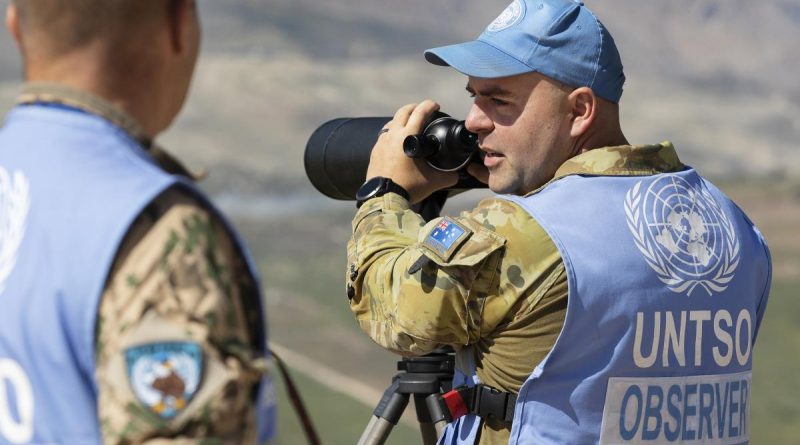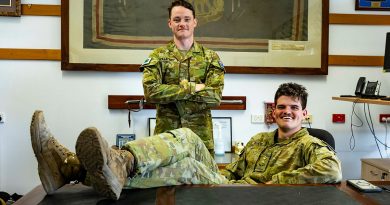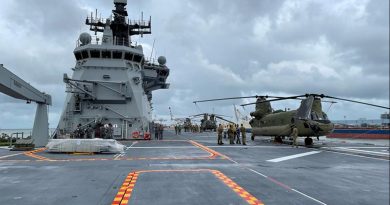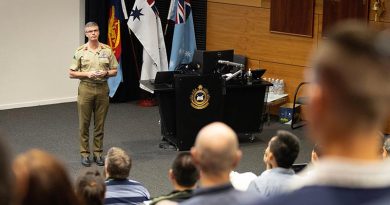Observers help keep the peace in Golan

Keeping an eagle eye is more than just a saying for United Nations Military Observer Captain John Whiteley.
CAPTION: Captain John Whiteley, right, confirms the presence of military equipment with Finnish colleague Captain Pasi Nukarinen during a routine patrol in the Golan Heights. Story and photo by Petty Officer Lee-Anne Cooper.
A member of Team Eagle working in Golan on the Israeli-Syrian border, Captain Whiteley is one of nine members who conduct mobile patrols and static operations as part of Operation Paladin, the ADF’s contribution to the UN Truce Supervision Organisation.
The teams watched for any activities that are, or could lead to, a violation of the 1974 Agreement on Disengagement between Israel and Syria.
“There are numerous civilians in the villages we monitor, which enables us to observe the pattern of life in the area,” Captain Whiteley said.
“When something changes, it allows us to quickly focus in and see if it is anything we need to report.
“The situation in the Golan is relatively calm, but it can change at a moment’s notice.
“For example, in February, rockets were fired from the Israeli Golan side into the Syrian side, destroying numerous buildings within a village.”
Patrolling anywhere from 50 to 200km a day, the military observers work in teams of a minimum of two from differing countries to maintain impartiality.
There are numerous patrolling sectors, with each made up of different areas that the Israeli Defence Force operate out of. This covers both permanent and temporary facilities, where training and operational activity is conducted.
“As a patrolling team, we move freely through all the different sectors,” Captain Whiteley said.
“Should we observe any presumed violations we are able to increase the observation and therefore the awareness for the commanders on the ground.
“An example is any military equipment that is unauthorised to be in the area of limitation, such as surface-to-air missiles, which are a violation of the 1974 agreement.”
The patrol vehicles are white to increase visibility, marked with large United Nations initials and carrying a UN flag to identify their purpose in the area.
Outside the vehicle the military observers wear headwear and vests with UN markings, again to increase visibility.
At the end of the patrols, a report is completed and any presumed violations are sent to the Force Commander of United Nations Disengagement Observer Force.
On average, each Team Eagle member will do three weeks of the month on the road, or in observation post 53.
The Australian personnel are deployed on Operation Paladin for six months.
A medical corps general service officer, Captain Whiteley joined the team at the start of the year.
“I have been really able to incorporate my navigation skills, my planning ability, with being able to plan the patrol and taking into account what the Israeli Defence Force are training for,” Captain Whiteley said.
“It is important we are here to ensure, as an impartial party, that the terms of the agreement are adhered to, to prevent any further conflict between Israel and Syria.”
.
.

.
.





